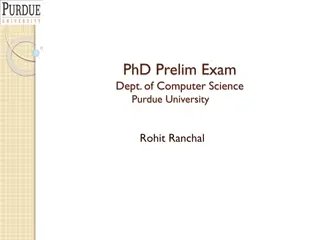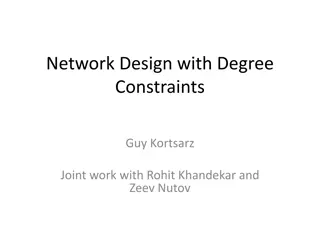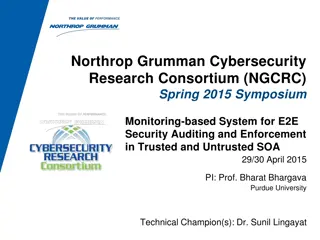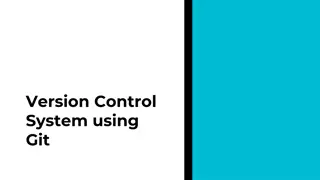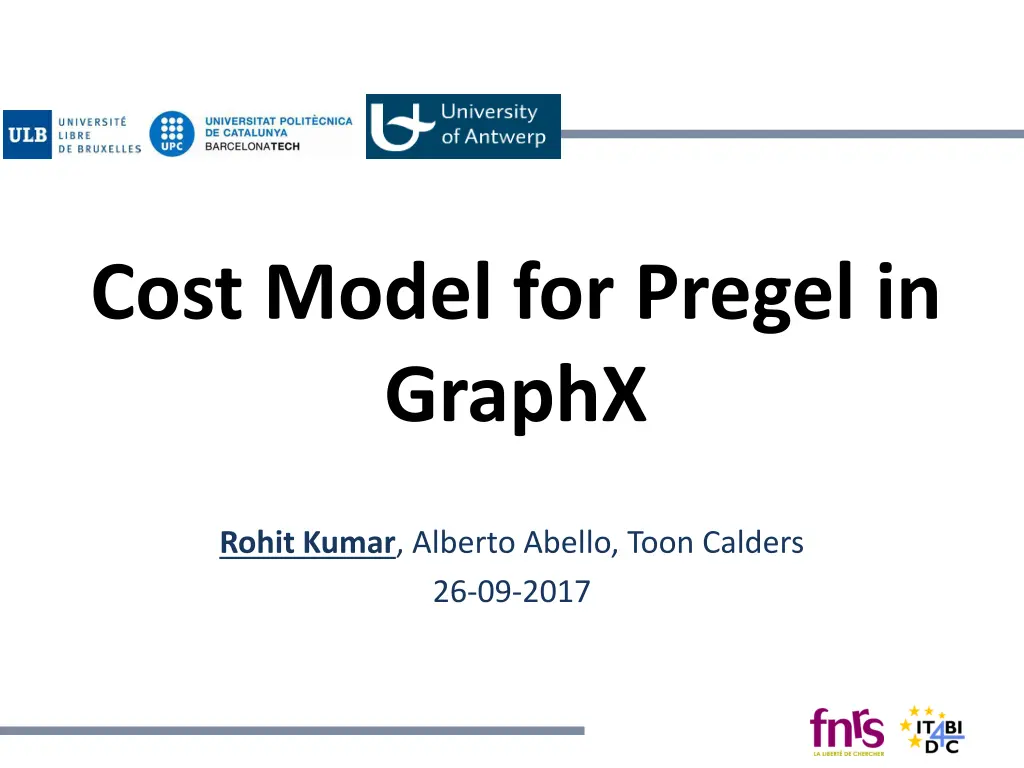
Cost Model for Pregel in GraphX: A Comprehensive Study
"Explore the cost model for Pregel in GraphX, covering the Pregel model, graph partitioning, evaluation of partitioning algorithms, Spark GraphX strategies, and more. Discover how partitioning impacts algorithm performance and efficiency." (248 characters)
Download Presentation

Please find below an Image/Link to download the presentation.
The content on the website is provided AS IS for your information and personal use only. It may not be sold, licensed, or shared on other websites without obtaining consent from the author. If you encounter any issues during the download, it is possible that the publisher has removed the file from their server.
You are allowed to download the files provided on this website for personal or commercial use, subject to the condition that they are used lawfully. All files are the property of their respective owners.
The content on the website is provided AS IS for your information and personal use only. It may not be sold, licensed, or shared on other websites without obtaining consent from the author.
E N D
Presentation Transcript
Cost Model for Pregel in GraphX Rohit Kumar, Alberto Abello, Toon Calders 26-09-2017
Outline Quick Background Pregel Model Graph Partitioning Spark GraphX Cost Model for Pregel on GraphX Experimental results Current and future work 2
Pregel Model The Pregel Programing model is inspired by Valiant s Bulk Synchronous Parallel(BSP) model and is one of the popular models in Think like a vertex (TLAV) paradigm. 3
Pregel Model Active Vertex Message Non-Active Vertex Task 6 Task 1 Task 2 Task 4 Task 7 Task 8 Task 3 Task 5 Barrier 1 Barrier 2 Barrier 3 Barrier 4 Super Step 4 Super Step 2 Super Step 1 Super Step 3 Time The total run time of the algorithm will depend highly on partitioning. 4
Graph Partitioning Two main goals of partitioning Minimize replication/communication cost Balance load across partitions How to evaluate different partitioning algorithms? How well they meet the goals Time and memory complexity of the algorithm 5
Graph Partitioning Two approaches: P2 P2 P1 P1 a d d d a b b b c e c e e Edge-cut partitioning P2 P1 P2 P1 a d d a b b b c c e e Vertex-cut partitioning 6
Graph partitioning in GraphX Spark GraphX uses vertex cut partitioning strategy: RandomVertexCut CanonicalRandomVertexCut (CRVC) EdgePartition1D EdgePartition2D Degree Based Hashing(DBH)(implemented by us for GraphX) 7
Graph Representation in GraphX http://note.yuhc.me/2015/03/graphx-partition-strategy/ 8
Pregel API in GraphX Def pregel(initialMsg, maxIterations, activeDirection) (vprog, sendMsg, mergeMsg) vprog: Vertex Program to run on every active vertex sendMsg: Program to run on edges incident on active vertices after Vprog mergeMsg: Program to merge all messages generated by sendMsg meant for one vertex for next superstep 9
Example Connected Component def vProg(id: VertexId, attr: double, msg:double ) = { math.min(attr, msg) } def sendMsg(edge: EdgeTriplet) = { if (edge.srcAttr < edge.dstAttr) { Iterator((edge.dstId, edge.srcAttr)) } else if (edge.srcAttr > edge.dstAttr) { Iterator((edge.srcId, edge.dstAttr)) } else { Iterator.empty } } def mergeMsg(a: Double, b: Double): Double = math.min(a, b) 10
Pregel Model in GraphX mapReduceTriplets mapVertices MessageRDD VertexRDD EdgeTrippletRDD a b bmsg bmsg a amsg bmsg b c b cmsg b bmsg c bmsg d bmsg dmsg c d d a c cmsg f a e fmsg cmsg emsg f d b b e emsg emsg bmsg Messages for next super Step to required partitions 11
Cost Model 13
Cost per partition cApply = cost of running vertex Program on active vertex + wData written on disk + 1 cGather = rread data from previous step + cost of running sendMsg Program on active edges + cost of merging all messages locally + w Data written on disk + 2 cReduce = reading all messages + cost to merge all messages for one vertex + 3 14
Estimating the constants cApply = cost of running vertex Program on active vertex + wData written on disk + 1 Y = wX + 1 15
Validate cost model Used Connected Component algorithm with CRVC partitioning on Twitter Euro dataset to get the constants: 1 = 1.366 msec 2 = 43.214 msec 3 = 17.75 msec w = 100.77 msec/Block r= 0.012 msec/Byte = 0.041 msec/record % Accuracy in estimating the run time using cost model Cost model is quite accurate!! 16
Whats Next Verma et. al.(VLDB 2017) An experimental comparison of partitioning strategies in distributed graph processing. 17
Examine why a partitioning strategy is better Algorithm dimensions Communication pattern Which of the three functions(vProg,mProg,sProg) are costly Graph dimension Degree distribution System/Cluster dimension Inter communication speed (artificially induced) 18
Example of rule Graph Dimension Low degree Algorithm Dimension High Communication (PageRank) All function: same weight and is very fast System Dimension High speed communication Result: DBH is better Why: - Writing messages in 2ndphase is cheap - Merge messages in 3rdphase is very cheap Insight: if sendMsg function takes more time compared to the other three functions CRVC will be better Tested the hypothesis by artificially making sendMsg heavier. 19
Current work Try more combinations for Graph and Algorithm to mine new rules For time evolving graph auto change the graph partitioning strategy based on cost model 1. Use Rule based strategy to determine Partitioning strategy. 1. Calculate repartition cost.(CR) Estimate cost for new partitioner (Cnew) Estimate cost using old partitioner. (Cold) Snapshot 1 2. 3. Snapshot n If(Cnew- Cold)> CR + Use New partitioning. 20
Take away message There are many partitioning strategies Picking best strategy is not trivial Depends on Graph, algorithm and system configuration Based on Cost model pick best strategy Similar to cost based query optimization in RDBMS 21
The art and science of asking questions is the source of all knowledge - Thomas Berger 22
Data exchange between Gather and Reduce Phase Multi row per file With fixed row Size. 24
Data exchange between Apply and Gather Phase One row per file With variable row Size. 25
Insight Dominating Factor System Configuration Algorithm Time Graph Structure Partitioning Strategy 26



